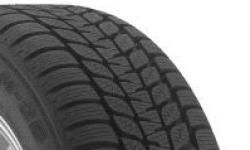Your tire's inflation pressure is measured as pounds per square inch, or psi. You should see the maximum recommended psi for your tires printed right on them. However, do note that manufacturers will often print a lower recommended psi than your tire can truly handle because the lower inflation rate will give you a softer ride. So while you might be tempted to over inflate your tires relative to the psi number of their side — don't. You don't know by exactly how much the manufacturer has low-balled the psi number on your tire, so you can't really know how much more air pressure your tire can handle. If you do over inflate your tires, you might cause some safety hazards. You'll definitely wear out the tires more quickly.
First, a tire that is over inflated shows more wear along the center width of the tire than along its edges. When your tires develop uneven tread wear, it shortens the overall life expectancy of your tire. The U.S. Highway Traffic Safety Administration (NHTSA) has given your tire a tread-wear rating (a higher number means better tread wear) as part of its uniform tire-quality grading (UTQG) system, to indicate the expected tread wear your tire can handle. However, the government generates these ratings by testing cars with properly inflated tires. By driving with over-inflated tires, you'll have to replace them sooner.
Advertisement
The proper inflation level on your tires also affects how much load your car can carry. Every car comes with a tire-load rating that tells you the maximum weight that your tires can bear. However, just as with the UTQG rating, the tire-load rating assumes properly inflated tires. If you over inflate your tires and overload the weight your car can carry, you're creating the perfect recipe for a tire to blow out.


